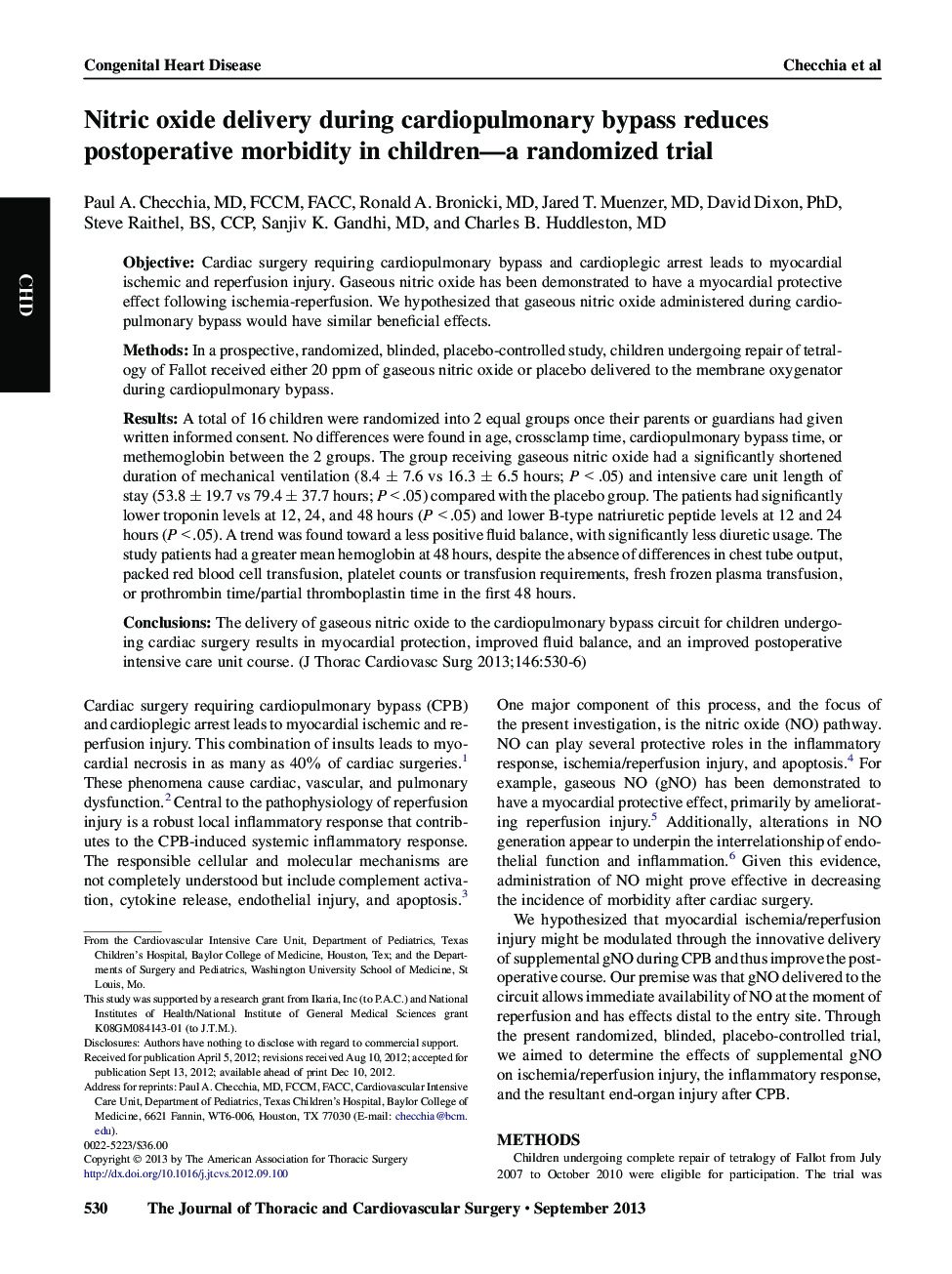| کد مقاله | کد نشریه | سال انتشار | مقاله انگلیسی | نسخه تمام متن |
|---|---|---|---|---|
| 5990112 | 1578619 | 2013 | 7 صفحه PDF | دانلود رایگان |

ObjectiveCardiac surgery requiring cardiopulmonary bypass and cardioplegic arrest leads to myocardial ischemic and reperfusion injury. Gaseous nitric oxide has been demonstrated to have a myocardial protective effect following ischemia-reperfusion. We hypothesized that gaseous nitric oxide administered during cardiopulmonary bypass would have similar beneficial effects.MethodsIn a prospective, randomized, blinded, placebo-controlled study, children undergoing repair of tetralogy of Fallot received either 20 ppm of gaseous nitric oxide or placebo delivered to the membrane oxygenator during cardiopulmonary bypass.ResultsA total of 16 children were randomized into 2 equal groups once their parents or guardians had given written informed consent. No differences were found in age, crossclamp time, cardiopulmonary bypass time, or methemoglobin between the 2 groups. The group receiving gaseous nitric oxide had a significantly shortened duration of mechanical ventilation (8.4 ± 7.6 vs 16.3 ± 6.5 hours; P < .05) and intensive care unit length of stay (53.8 ± 19.7 vs 79.4 ± 37.7 hours; P < .05) compared with the placebo group. The patients had significantly lower troponin levels at 12, 24, and 48 hours (P < .05) and lower B-type natriuretic peptide levels at 12 and 24 hours (P < .05). A trend was found toward a less positive fluid balance, with significantly less diuretic usage. The study patients had a greater mean hemoglobin at 48 hours, despite the absence of differences in chest tube output, packed red blood cell transfusion, platelet counts or transfusion requirements, fresh frozen plasma transfusion, or prothrombin time/partial thromboplastin time in the first 48 hours.ConclusionsThe delivery of gaseous nitric oxide to the cardiopulmonary bypass circuit for children undergoing cardiac surgery results in myocardial protection, improved fluid balance, and an improved postoperative intensive care unit course.
Journal: The Journal of Thoracic and Cardiovascular Surgery - Volume 146, Issue 3, September 2013, Pages 530-536